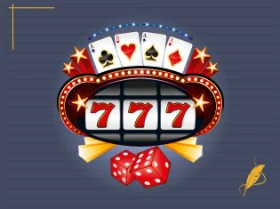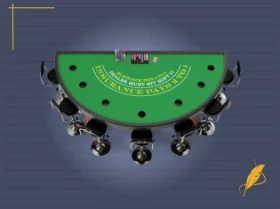Return to Player (RTP) means how much a slot pays back to the player over a period. For a slot player, it is imperative to understand what RTP is, how it affects gameplay, the difference between house edge, RTP and volatility and how to find slots with great RTP. Read on to understand all these important concepts simplified for you.
How RTP Affects Slot Gameplay
The concept of RTP makes more sense for long-term play (millions of spins) only. In a single game session, anything can happen, and you may win or lose more than what is advertised.
Does that mean RTP doesn’t matter while playing a few games? To answer this question, let’s consider the following example. Let’s consider two slots with 88% and 95% RTP. Since the slot with a 95% RTP percentage returns you more money, you may be better off playing this slot than the one that returns only 88%.
Highest RTP Slots
The slots with high RTP percentages usually return more to the player over time. This means that such slots keep on rewarding small, decent wins to the players frequently in the base game. It also means that players who are after a big win might not want to play the slot games with the highest RTPs. Why? We’ll understand this in the next section.
First, let’s look at five slot games with the high RTPs.
- Mega Joker (NetEnt) – 99%
- The Catfather (Pragmatic Play) – 98.1%
- Rainbow Riches (Barcrest) – 98%
- Starmania (NextGen Gaming) – 97.87%
- Big Bad Wolf (Quickspin) – 97.4%
Lowest RTP Slots
The slots with a low return to player usually do not reward the players frequently. Most of these do not have rewarding base game wins, and their wins are usually concentrated in the bonus features. Many of these are progressive jackpot slots, like Mega Moolah, that have the capability to reward big jackpots.
We have listed five slot games with low RTPs:
- X-men 50 lines (Playtech) – 92%
- Mega Moolah (Microgaming) – 88%
- Book of Atem Wowpot (Microgaming) – 88.12%
- Jingle Bells (Belatra Games) – 89.25%
- Enchanted (Betsoft) – 89.4%
The Difference Between House Edge and RTP
House Edge is the amount that a slot machine keeps as profit. For example, if a slot machine has a 15% house edge, it means, on average, it returns 85% and keeps 15%. This means 85% is the RTP of that slot game. But as explained above, RTP makes sense only for long-term play.
This clearly shows that a slot game never returns more than what players bet playing at it. The house always wins, meaning slot machines always derive profit out of your playing, which is called the ‘house edge’ or ‘house advantage’.
Essentially, lower house advantage and a higher RTP are favourable for the slot players. So for players looking to maximise their winnings, calculate RTP together with the house advantage.
RTP vs Slot Volatility: Understanding the Differences
The volatility of a slot game is how a slot game’s RTP is realised. For example, let’s consider two slots with RTP of 96%, one with high volatility and the other with low volatility. The high-volatility games have a low hit frequency meaning they reward infrequent but bigger wins. These might finish your bankroll in lesser spins.
On the other hand, a low volatility slot game that will still pay 96% will give you small, frequent wins in the base game and have high hit frequency. For these, even if you are unable to activate the bonus features of the slot, you’ll still make some small winnings and might not lose the entire bet amount. You can play more spins with the same bankroll.
How to Find Slots with High RTP Rates
A slot casino RTP is always listed in its paytable or game rules. Remember, the demo version RTP of a slot game might differ from the one with real money, so keep this into consideration.
One may find slots with highly advertised RTP listed on online casino websites. There are a lot of reliable websites that provide a list of slot games with high RTPs, and you can choose the one with the theme that you prefer. It is strongly advised to test out free casino slots before committing to playing with real money.
Remember, to compare apples to apples only. Do not compare RTP of a progressive jackpot game to a normal game. This is because a jackpot game will have a significantly lower RTP and hit frequency for base game wins. Also, for the same RTP, you have a choice to play a low-volatility slot with a high hit frequency or a high-volatility slot with a low hit frequency. You can choose depending on the bankroll that you are playing with.







![The Richest Gamblers in the World [TOP 15]](https://www.slotozilla.com/au/wp-content/uploads/sites/35760/new_uploads/2024/02/blog-sz-au-1-280x209.webp)




